The New H. Moser & Cie. Endeavour Perpetual Calendar Tantalum Blue Enamel
Moser's beloved signature complication gets a Grand Feu dial and a very hard case.
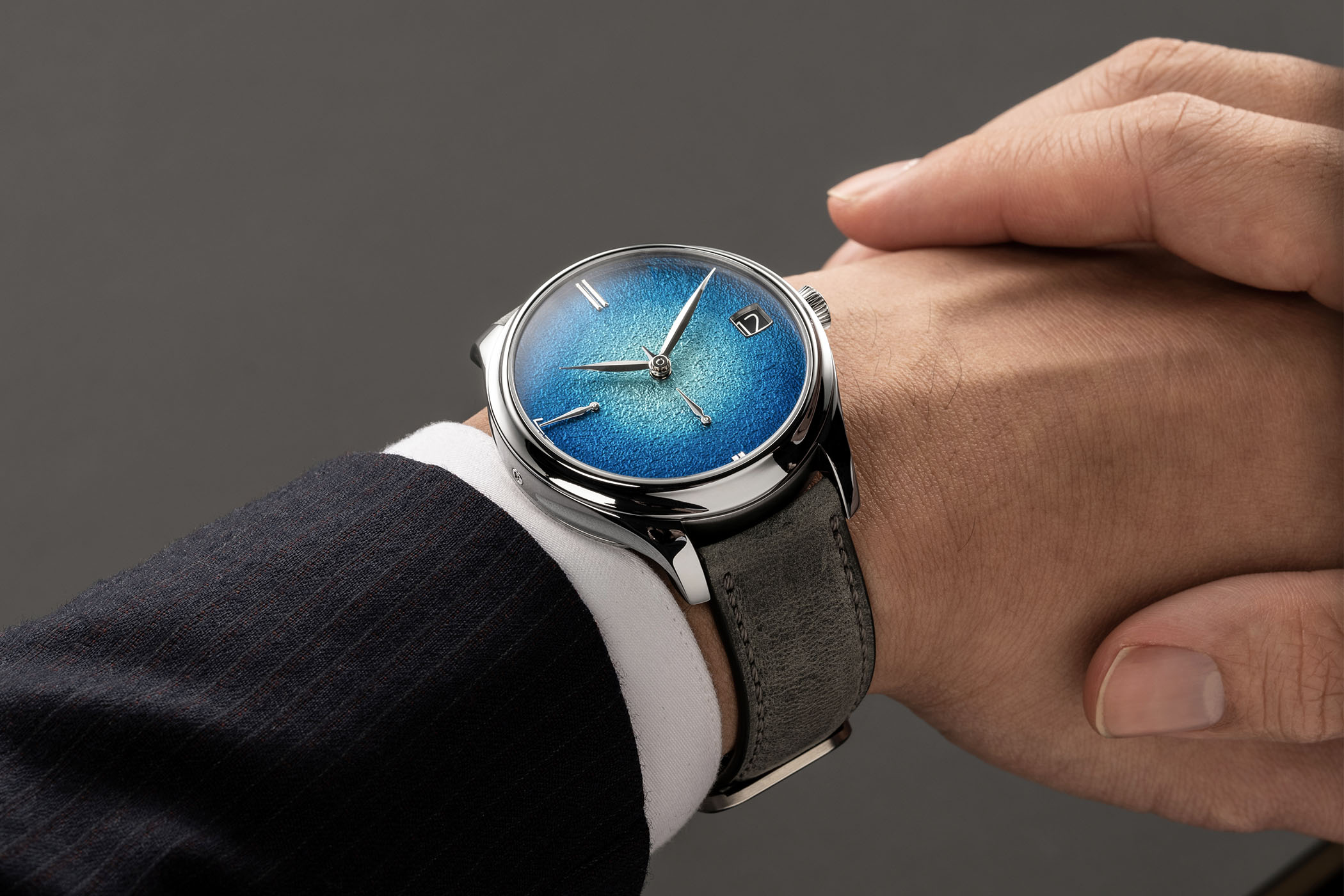
H. Moser & Cie.’s signature perpetual calendar complication originally debuted in 2006 as the Perpetual 1 and captivated watch fans with its gracious design and technical excellence. The popularity of the watch propelled the young company with a legendary name into the future. Over the years, H. Moser & Cie. produced several QP models in various case materials and with a choice of dials, always impressive and in line with the brand’s philosophy and character. Last year we all got to smile by looking at the “cheat sheet” Endeavour Perpetual Calendar Tutorial, nicknamed “perpetual calendar for dummies”, to highlight the simplicity of its operation. This year, H. Moser & Cie. presents a new variant of the iconic Endeavour Perpetual Calendar, in a tantalum case and with a blue enamelled dial.
The choice of metal to manufacture the case is an interesting one. Tantalum, with the symbol Ta and atomic number 73, was first discovered in 1802 by Gustav Ekeberg in Sweden. A year earlier, Charles Hatchett had discovered columbium (now called niobium), and from 1809 for almost forty years, the two elements were considered identical. In 1846 the German chemist Heinrich Rose disputed this erroneous conclusion made by the Brit William Hyde Wollaston, and in 1864-1865 many prominent scientists confirmed his discovery. Tantalum had its name “cleared”, and in 1903 relatively pure tantalum was produced for the first time and used in metallic wires for light bulb filaments until tungsten stole the light show.
The name for this hard, chemically inert metal with a very high melting point (3000 °C) comes from Greek mythology. Gods punished Tantalus for several offences – he was a thief and a liar, but he also cut up his son, boiled him and served him at a banquet. His punishment was to stand in a pool of water under a fruit tree with low branches, with the fruit eluding his hands and the water receding before he could drink. However, Gustav Ekeberg explained the name tantalum in less exciting terms – “partly in allusion to its incapacity, when immersed in acid, to absorb any and be saturated”.
This new H. Moser & Cie. Endeavour Perpetual Calendar Tantalum Blue Enamel is the manufacture’s first use of this highly corrosion-resistant blue-grey metal. Edouard Meylan, CEO of H. Moser & Cie., explains that not only were tantalum’s qualities the primary reason to master the manufacturing process, but there was a personal touch, too. For his 18th birthday, he received a tantalum watch as a gift from his parents (my guess is it was an AP). Fascinated by the metal’s properties since then, he decided to introduce tantalum to H. Moser & Cie.
The result is a classic Endeavour case, 42mm in diameter and 13.1mm thick, with curved sapphire crystals front and back and a caseback and crown in stainless steel. The tantalum case reflects the light by producing shades of anthracite grey and metallic blue, much enhanced by the “Abyss Blue” colour of the fumé dial. Keeping the familiar H. Moser & Cie. minimalist approach to dial designs, the Endeavour Perpetual Calendar Tantalum Blue Enamel features just two indices at 6 and 12 o’clock. There is no logo or Swiss-made mention, no sub-dials, just the leaf-shaped hands for the time, small seconds and power reserve, and a small arrow-shaped indicator in the centre for the month. The instant-change date window is at 3 o’clock; other than that, the dial surface reveals the “hammered” texture of the beautiful Grand Feu enamel. We’ve seen this technique in the Endeavour Centre Seconds Concept Lime Green, but the complexity of creating such a beauty calls for a short review of the process.
The engrained gold base reveals a pattern that looks like it has been hammered repeatedly. Four blue-colour pigments are washed, crushed and then applied to the prepared base to produce the desired shadow effect by the master enameller. The pigments are carefully added so they melt together correctly when heated. The dial must be fired twelve times to achieve the fumé effect H. Moser & Cie. is known for. Naturally, each dial is unique.
This stunning timepiece with immense appeal is also remarkable from a technical point of view. The hand-wound HMC 800 calibre, developed for H. Moser & Cie. by Andreas Strehler, allows the watch to be set using the crown any time of day or night. This movement has a double barrel that stores energy for a minimum of seven days. The calibre is hand-finished and decorated in Haute Horlogerie fashion; its pallet fork and escapement wheel are made from gold. The leap year indicator is movement-side, but you will be turning this watch over to admire the calibre more often than once in four years.
The tantalising new H. Moser & Cie. Endeavour Perpetual Calendar Tantalum Blue Enamel is presented on a hand-stitched grey kudu (African antelope) leather strap with an engraved steel folding clasp. This reference retails for CHF 75,000, taxes included.
For more, please visit www.h-moser.com.


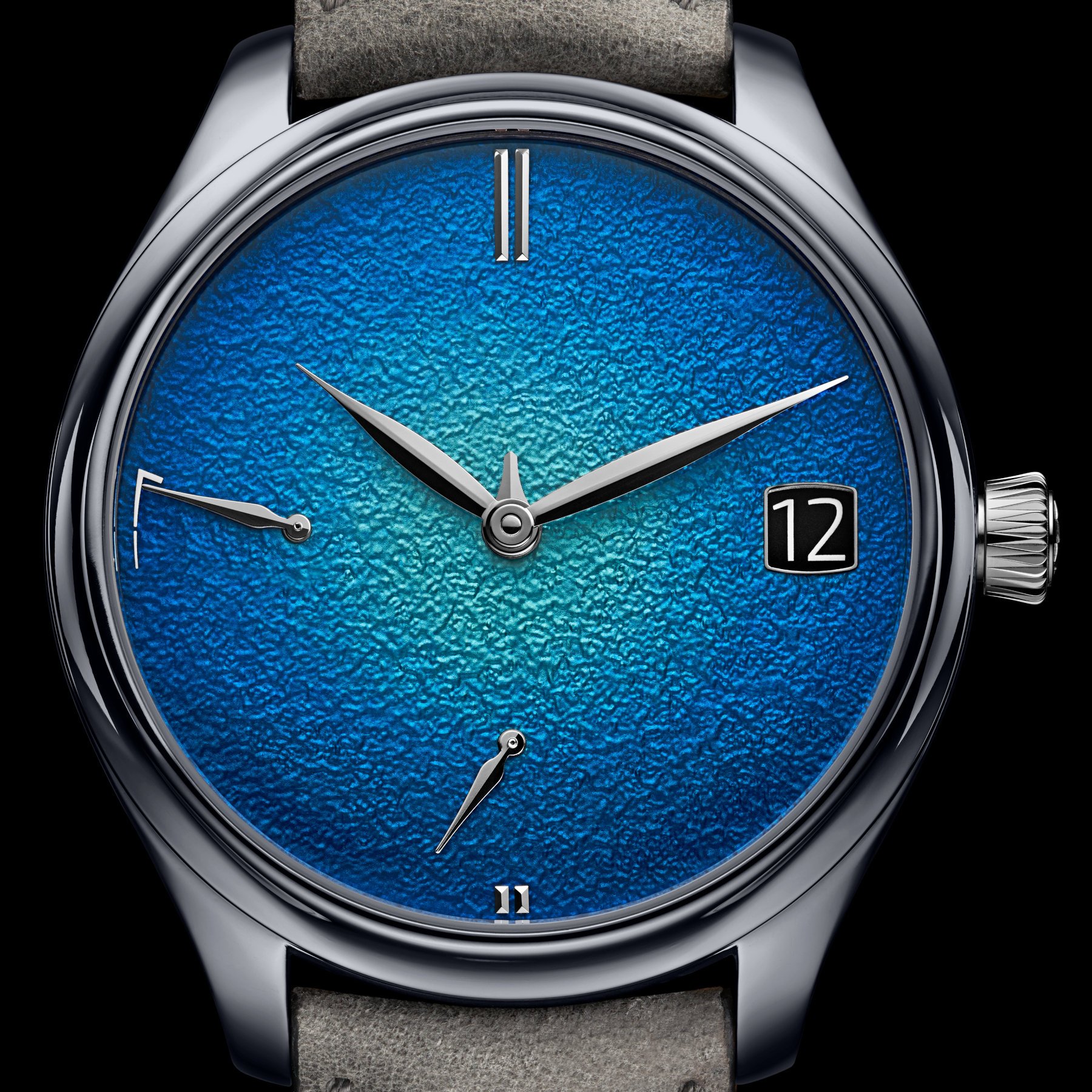
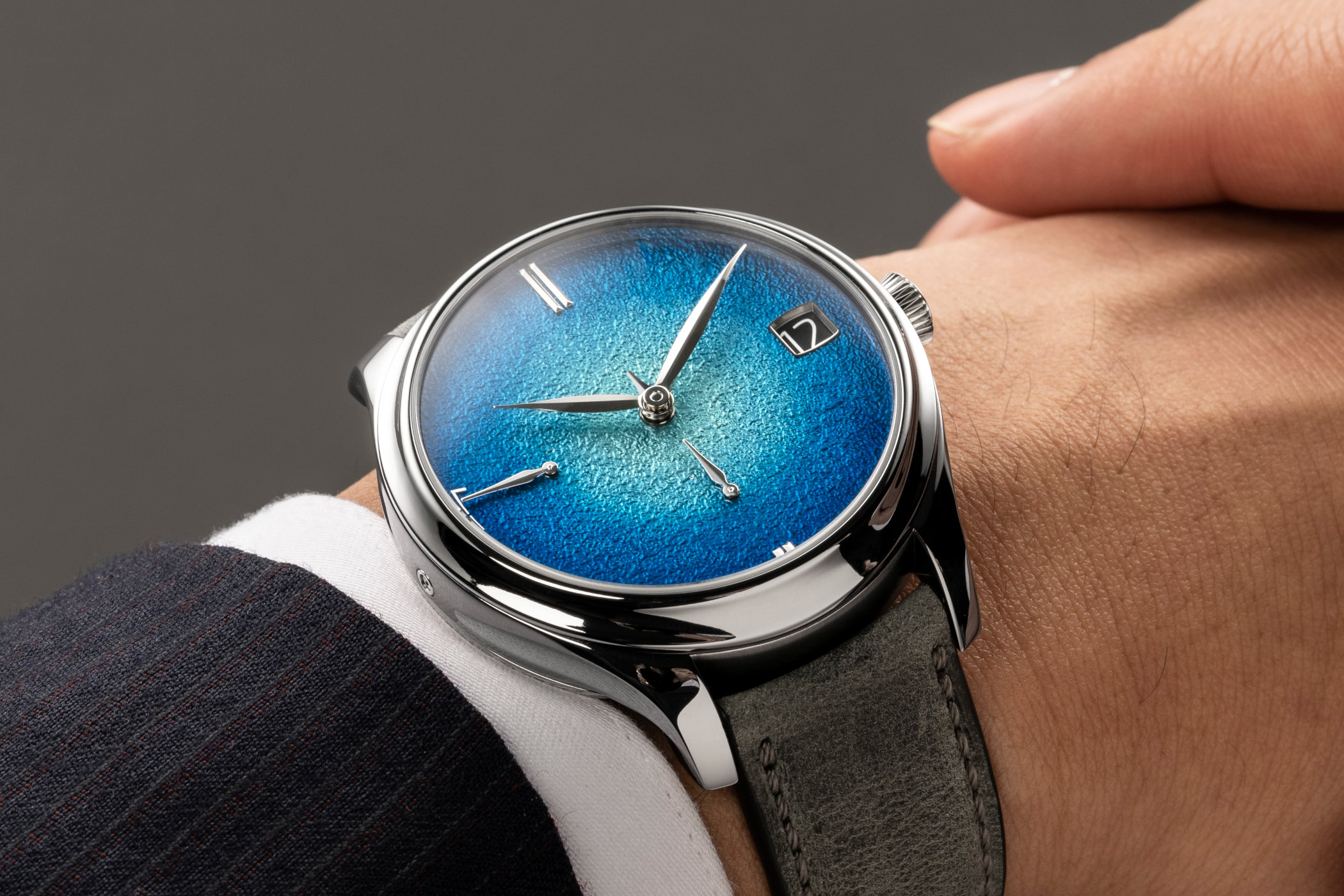
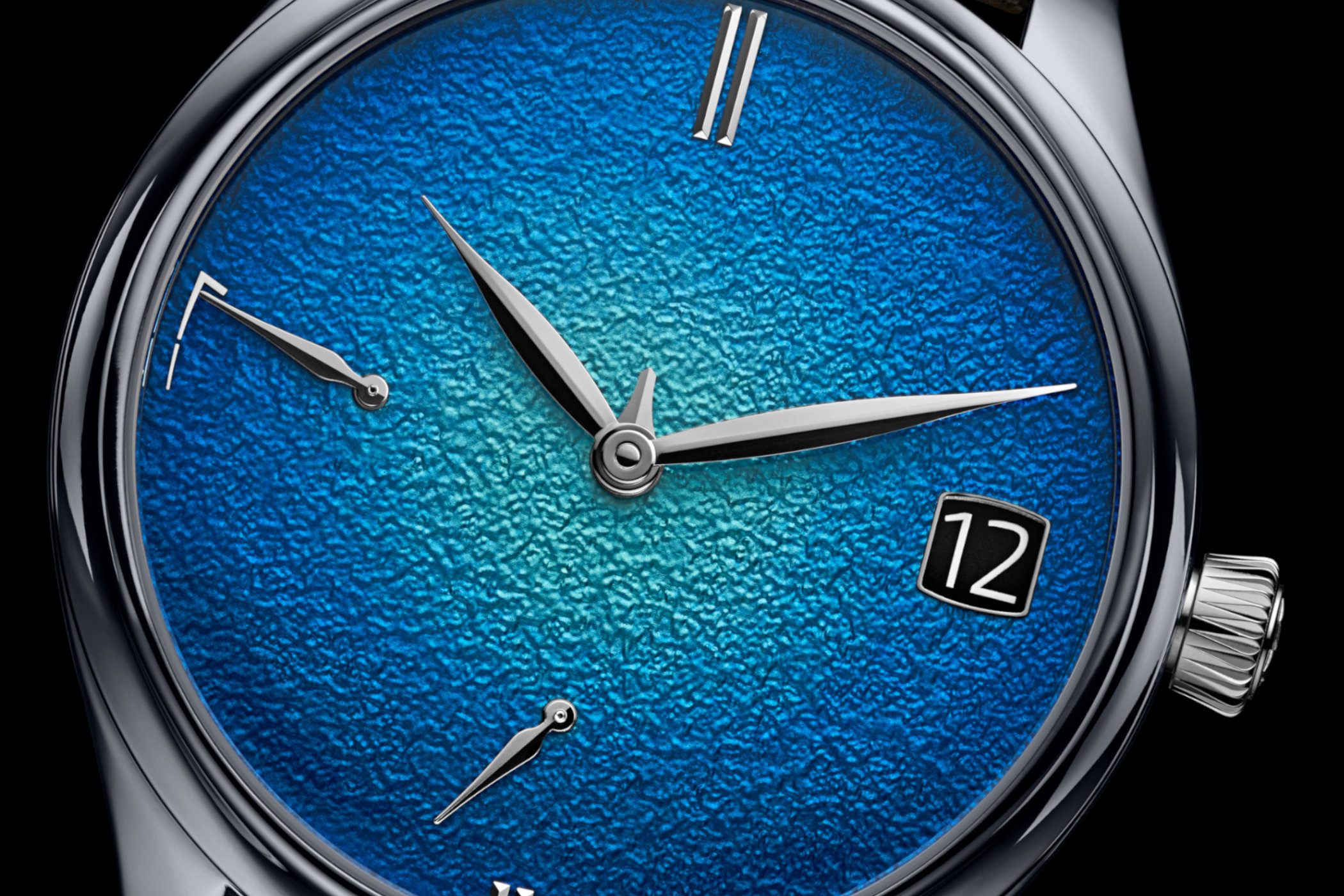
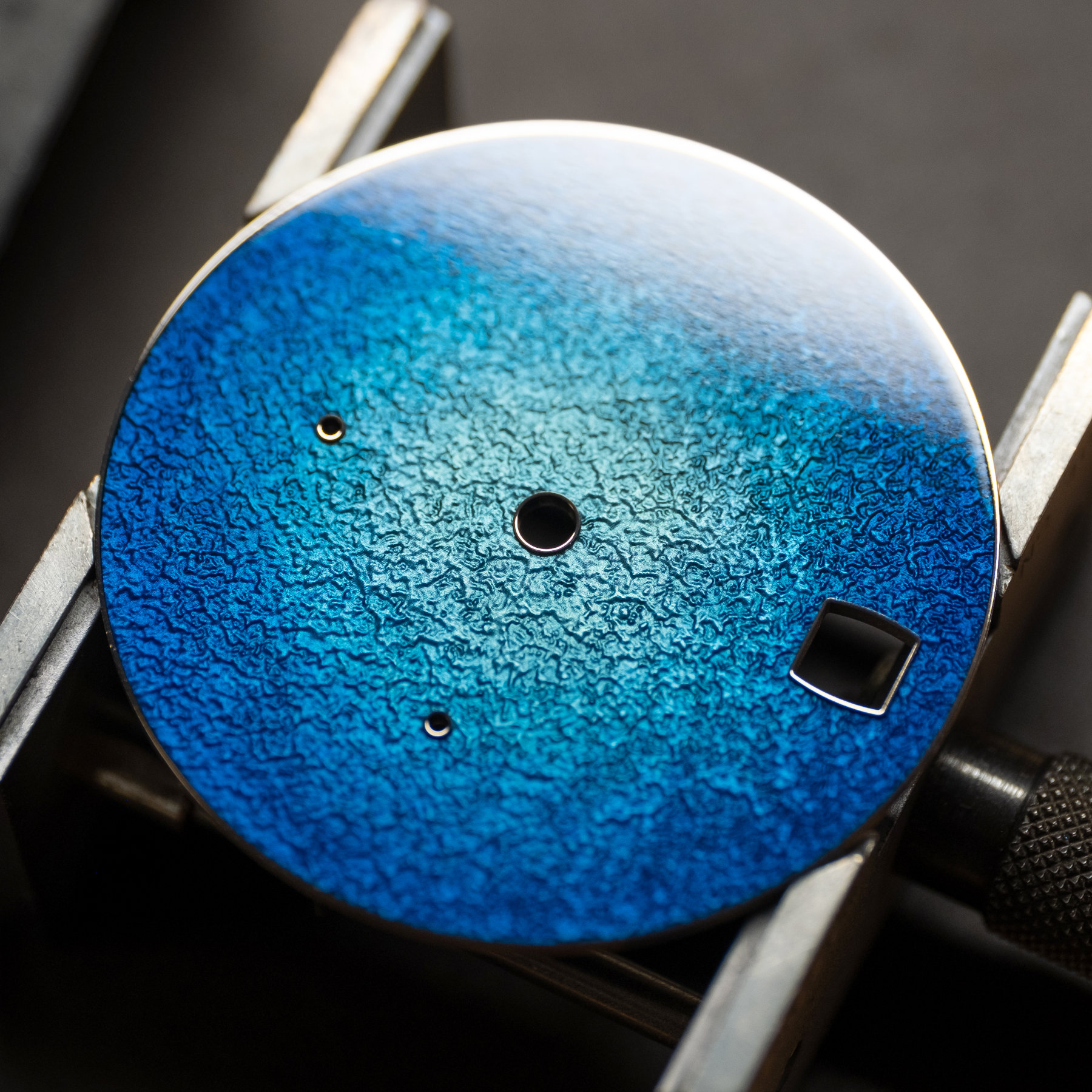
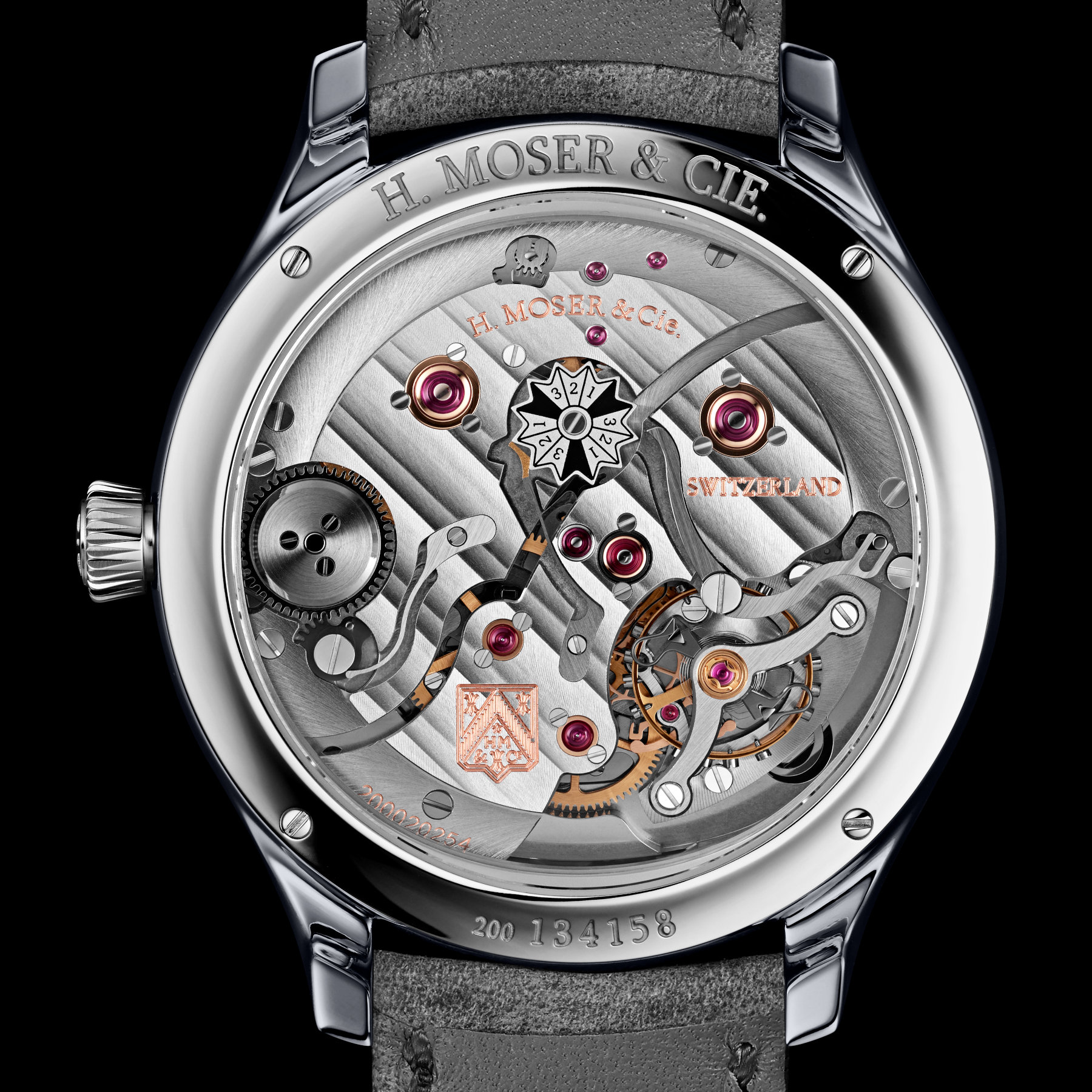

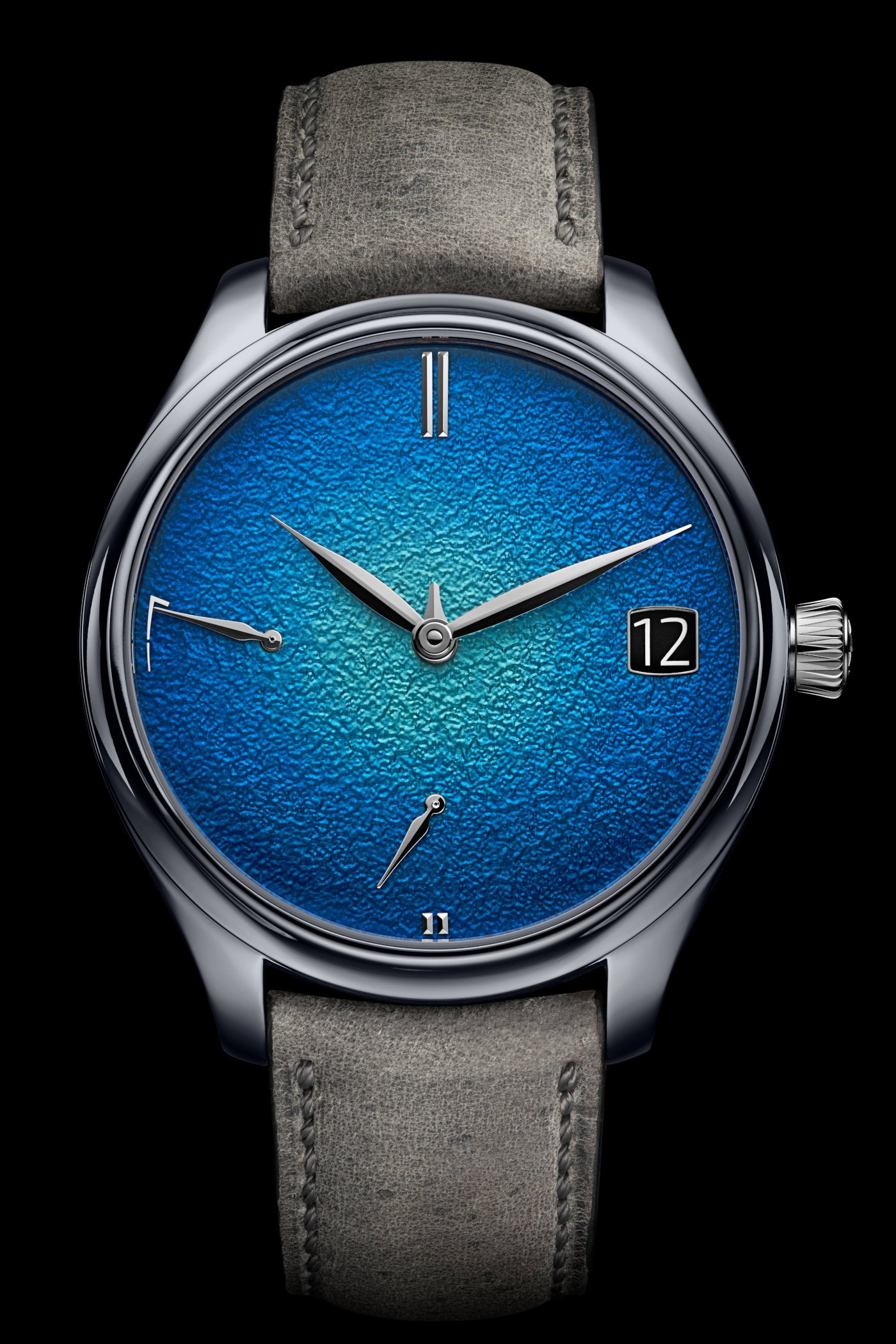



1 response
The dial is stunning. However, while I realize it’s a perpetual calendar the date window essentially ruins it; for me at least.